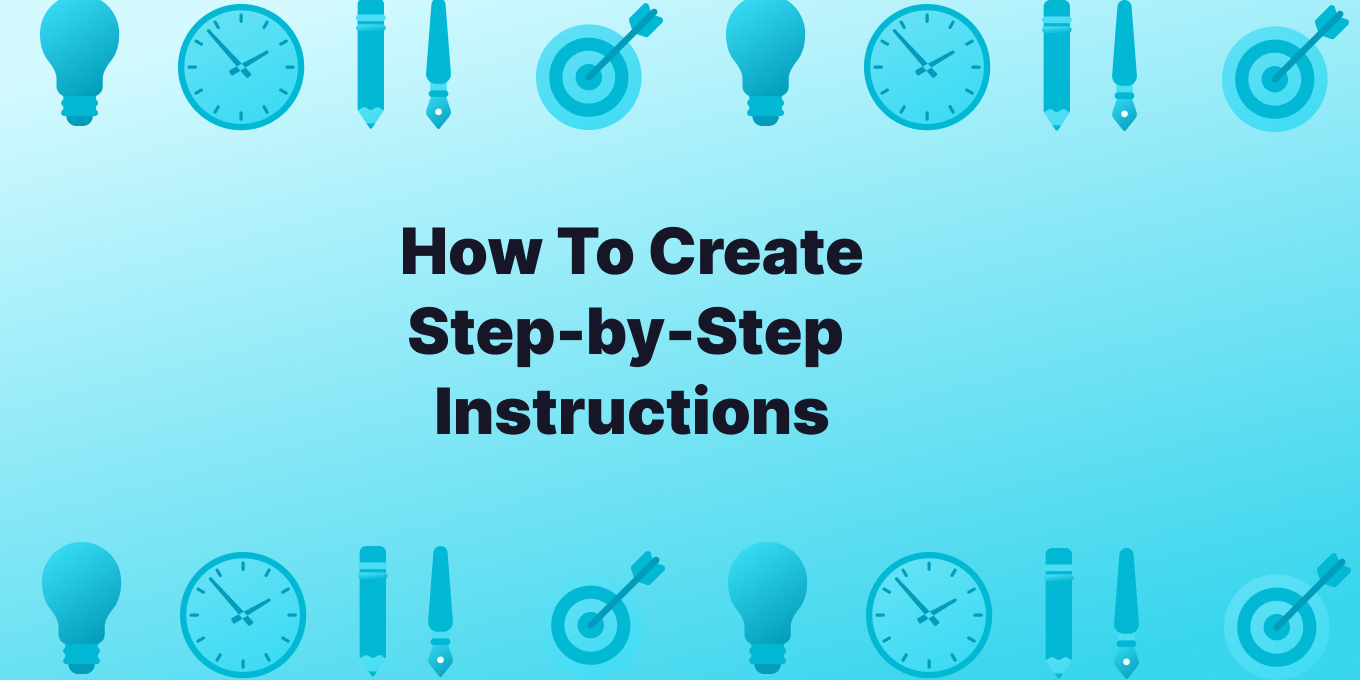In any organization, the ability to deliver clear and precise work instruction through a well-structured step guide is invaluable.
Whether it’s for customer support or internal operations, the effectiveness of a process often hinges on the clarity of its support documentation.
Here’s Why Step-by-Step Instructions are Important
Step-by-step instructions, or detailed instructions as they are often called, play a pivotal role in ensuring that complex processes are executed accurately. They are particularly crucial in environments where precision and consistency are required, such as technical writing, manufacturing, or any area involving complex process handling.
⭐️ Recommended: The 6 types of support documentation you need
The Benefits of Step-by-Step Instructions
Providing comprehensive step guides not only enhances user comprehension but also ensures successful task completion, reduces confusion, increases productivity, and minimizes errors.
For businesses, this translates into improved customer success and fewer support calls.
When designed well and kept updated, step-by-step work instructions become a reliable source of truth for your customer support team to deliver consistently great customer service.
Step-by-Step Instructions Improve Customer Satisfaction
Effective step-by-step instructions, often part of a company’s help center or customer support knowledge base, significantly boost customer satisfaction by empowering users to solve problems independently.
This autonomy can lead to a greater sense of accomplishment and increased trust in the product or service, creating a positive user experience and enhancing customer loyalty.
The Parts of Effective Step-by-Step Instructions
Creating effective instructions involves several key components, which are often encapsulated in a company’s internal knowledge base or standard operating procedures:
- Clear and Concise Language: Utilizing simple, direct language, often in passive voice to emphasize actions, helps make the instructions more digestible and less prone to misinterpretation.
- Visual Elements for Enhanced Comprehension: Incorporating diagrams, photos, and video tutorials can clarify more complex steps and ensure users correctly follow the instructions.
- Consideration for Different Learning Styles: Providing information in various formats—text, video, and diagrams—caters to different learning preferences, ensuring that the instructions are accessible to everyone.
- The Role of Contextual Guidance in Step-by-Step Instructions: Providing context helps users understand not only how to perform the steps but also why these steps are necessary, which enhances comprehension and execution.
Why Step-by-Step Instructions Help With Business Processes
In business, clear instructions are vital for several processes:
- Employee Onboarding and Engagement: Streamlines the training process by providing new hires with straightforward and easy-to-follow guidelines, thereby reducing the learning curve and enhancing employee engagement through clear, written steps and sequential steps in their training manuals.
- Enhancing Employee Collaboration: Ensures all team members follow the same procedures when handling customer inquiries and complaints, which is crucial for the success of collaborative projects and tasks.
- Streamlining Internal Processes: Helps in standardizing practices across the company, leading to more consistent and predictable outcomes.
Tools for Creating Step-by-Step Instructions:
1. Guidemaker from Tettra
Guidemaker automatically creates detailed step-by-step guides and SOPs by recording your actions, integrates seamlessly with popular platforms like Tettra, Notion and Confluence, and offers unlimited access to all features for free, making it ideal for efficient documentation and training.
2. Canva
Canva is a user-friendly graphic design tool that’s excellent for creating visually appealing instructions. It offers a drag-and-drop interface, numerous templates, and access to a vast library of images and icons. Canva is particularly good for those who want to create stylish and colorful instruction sheets without needing extensive graphic design skills.
3. Tango
Tango focuses on creating visual step-by-step guides with screenshots. It’s an intuitive tool that captures your actions in a web browser and automatically generates a guide with perfectly cropped screenshots, descriptions, and the sequence of steps.
4. Scribe
Scribe is a powerful, AI-powered tool designed to simplify the documentation of processes. It stands out for its ability to automatically generate step-by-step guides by capturing on-screen actions. This feature is particularly beneficial for creating detailed, easy-to-follow instructions with minimal effort.
⭐️ Recommended: Top Scribe alternatives to consider
5. Hubspot Guide Creator
HubSpot’s Guide Creator is a tool designed for crafting detailed step-by-step guides. It captures screenshots with each click, automatically organizing and labeling the steps. Users can edit images and text to tailor the guides for different audiences, enhancing clarity and accessibility. Once completed, the guides can be easily shared via a link.
Metrics for Success: Evaluating the Effectiveness of Your Step-by-Step Instructions
Key performance indicators to measure the effectiveness include:
- User Engagement: Time spent on instruction pages, task completion rates, views, and downloads.
- User Feedback: Surveys and comments that provide insights into user satisfaction and areas for improvement.
- Support Reduction: Decreases in support queries and customer support tickets as a measure of increased user independence.
Integration with Business Tools and Systems
Integrating instructions with business tools enhances utility:
- CRM Systems: Embedding instructions in Salesforce or Zoho for quick access during customer interactions.
- Project Management Tools: Including instruction links in Asana and Trello tasks to ensure adherence to procedures.
- Custom Applications and Virtual Reality: Using APIs to integrate instructions for immersive training experiences.
The Future of Step-by-Step Instructions: Digital Documentation and Automation
The advancement of technology promises significant improvements in how instructions are created and delivered. Digital tools and automation software like ProProfs Knowledge Base enable dynamic content adjustment, personalized learning experiences, and efficient updates, paving the way for more sophisticated and user-friendly instruction methods.
Keep all of your step-by-step instructions in Tettra
Now you’ve created all of those step-by-step guides, but where do you put them?
Tettra can be your central source of truth for your guides, SOPs, product release notes and more.
- Centralized Knowledge Base: Tettra offers a centralized place for storing various types of documentation, including step-by-step guides. This centralization ensures that all team members have access to the same information, promoting consistency and efficiency. You can embed Tango or Scribe right inside of Tettra. Check it out here.
- Integration with Collaboration Tools: Tettra integrates with popular collaboration tools like Slack. This integration allows users to easily access and share step-by-step guides directly within the platforms they use for daily communication, enhancing the visibility and usability of the guides.
- User-Friendly Interface: Tettra is known for its user-friendly interface, which simplifies the creation, sharing, and management of guides.
- AI-Powered Search and Organization: Tettra’s use of artificial intelligence to curate and organize content makes it easier for team members to find the specific step-by-step guides they need. You can even ask right inside of Slack, which reduces the time spent looking for information. The AI bot will tell you the answer, with a page reference included.


